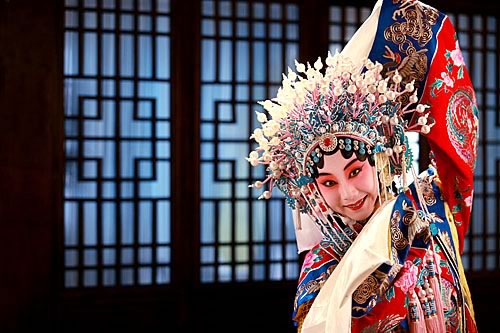Mandarin House presents Beijing Opera 101
I’m sure that most of you have seen and heard the distinctive sights and sound of Beijing opera. It’s an important part of the Chinese cultural landscape so read on for a Beijing Opera crash course.
Beijing Opera history
Opera as an entertainment form has a long history in China dating back at least a couple of thousand years. It wasn’t until the Song dynasty (1271-1368) that the art form became more structured and consistent and recognizable as the art form we see today.
From the Song dynasty a key characteristic of Chinese opera is that it is a comprehensive performing art. It combines singing, music, dialogue, acrobatics, martial arts and pantomime.
In the late Qing dynasty (around 1790) a new type of Chinese operatic type came into being. Operatic troupes from the province of Anhui moved to Beijing and began performing there. After 50 years this operatic form evolved into the Beijing Opera we still see today.
Beijing Opera: the roles
Most Beijing operas performed today have 4 key roles that are present in nearly all of the stories:
Sheng (生): is the male role in Beijing opera. There are a number of different Sheng characters based on the age and social status of the character.
Dan (旦) : this is a general term in Beijing opera for all female roles. As with the Sheng there can be different types of sheng character based on age and status. In feudal china men and women were not allowed to perform on stage together so the dan characters would be performed by male actors.
Jing (净): a role with a painted face, they tend to be very skilled at either singing or dancing or martial arts. The colour of their face indicates their personality and character traits (read below for more).
Chou (丑) : Is a clown role. This role can be either a force for good, or for evil and treachery.

Beijing Opera: face painting
Beijing Opera is characterized by colourful and ornate face painting. It is normally only the Chou and Jing roles that have their faces painted. The designs on the Chou characters are simpler and nearly always include a white painted nose. The Jing in comparison have many different designs and colours. Below is a summary of the most commonly used colours and the character traits these colours portray.
Red: is a positive colour that indicates highly regarded character traits like devotion, courage and a sense of morality.
Yellow tends to indicate fierceness, ambition and cool headedness.
Blue shows staunchness, fierceness and astuteness.
White is probably the most negative colour showing sinisterness, treacherousness and suspiciousness.
Gold and silver are also used. These are the colours that show a character is a God or a spirit.
Phew! That is our crash course in Beijing opera. Watch a video of some of Mandarin House’s talented, Shanghai students learning about and creating Beijing opera face masks.
Ay questions ask us here


